CRI实用英语课堂 Unit 19 American Movies I 美国电影 1
搜索关注在线英语听力室公众号:tingroom,领取免费英语资料大礼包。
(单词翻译)
Part 1 The History of American Movies 美国电影发展史 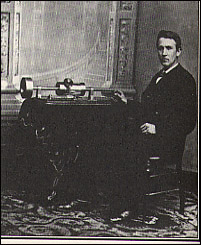
Of all the products of popular culture, none is more sharply etched in our collective imagination than the movies. Most Americans instantly recognize images produced by the movies: Charlie Chaplin, the starving prospector1 in The Gold Rush, eating his shoe, treating the laces like spaghetti. Paul Muni, the jobless World War I veteran in I am a Fugitive2 from a Chain Gang, who is asked how he lives and replies, "I steal." Gloria Swanson, the fading movie goddess in Sunset Boulevard, belittling3 suggestions that she is no longer a big star: "It's the pictures that got small."
Movies are key cultural artifacts that offer a window into American cultural and social history. A mixture of art, business, and popular entertainment, the movies provide a host of insights into Americans' shifting ideals, fantasies, and preoccupations. Like any cultural artifact, the movies can be approached in a variety of ways. Cultural historians have treated movies as sociological documents that record the look and mood of particular historical settings; as ideological4 constructs that advance particular political or moral values or myths; as psychological texts that speak to individual and social anxieties and tensions; as cultural documents that present particular images of gender5, ethnicity, class romance, and violence; and as visual texts that offer complex levels of meaning and seeing.
Beside Macy's Department Store in Herald7 Square New York City there is a plaque8 commemorating9 the first public showing of a motion picture on a screen in the United States. It was here, on April 23, 1896, at Koster and Bial's Music Hall in New York City, that Thomas Alva Edison presented a show included scenes of the surf breaking on a beach, a comic boxing exhibition, and two young women dancing. A review in The New York Times described the exhibition as "all wonderfully real and singularly exhilarating."
The first successful efforts to project lifelike images on a screen took place in the mid-seventeenth century. By 1659, a Dutch scientist named Christiaen Huygens had invented the magic lantern, the forerunner11 of the modern slide projector12, which he used to project medical drawings before an audience.
The first true moving images appeared in the 1820s, when the concept of the persistence13 of vision was used to create children's toys and other simple entertainments. The thaumatrope, which appeared in 1826, was a simple disk with separate images printed on each side (for example, a bird on one side and a cage on another). When rapidly spun14, the images appeared to blen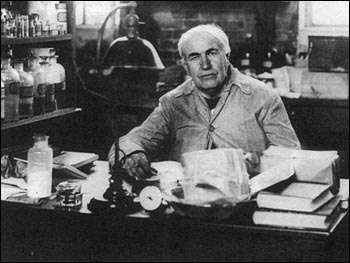 d together (so that the bird seemed to be inside the cage). A simpler way to display movement was the flip15 book, which became popular by the late 1860s. Each page showed a subject in a subtly different position. When a reader flipped16 the book's pages, the pictures gave the illusion of movement.
d together (so that the bird seemed to be inside the cage). A simpler way to display movement was the flip15 book, which became popular by the late 1860s. Each page showed a subject in a subtly different position. When a reader flipped16 the book's pages, the pictures gave the illusion of movement.
In 1887, Thomas Edison gave William K.L. Dickson, one of his leading inventors, the task of developing a motion picture apparatus17. Edison envisioned a machine "that should do for the eye what the phonograph did for the ear." Dickson initially18 modeled his device on Edison's phonograph, placing tiny pictures on a revolving19 drum. A light inside the drum was supposed to illuminate20 the pictures. Then he decided21 to use the flexible celluloid film that George Eastman had invented in 1880 and had begun to use in his Kodak camera. Dickson added perforations to the edge of the film strip to help it feed evenly into his camera.
To display their films, Dickson and Edison devised a coin-operated peepshow device called a "kinetoscope." Because the kinetoscope could only hold fifty feet of film, its films lasted just 35 to 40 seconds. This was too brief to tell a story; the first kinetoscope films were simply scenes of everyday life, like the first film "Fred Ott's Sneeze," reenactments of historical events, photographed bits of vaudeville22 routines, and pictures of well-known celebrities23. Nevertheless, the kinetoscope was an instant success. By 1894, coin-operated kinetoscopes had begun to appear in hotels, department stores, saloons, and amusement arcades24 called nickelodeons.
In 1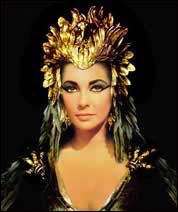 894, the Lumiere brothers introduced the portable motion picture camera and projector.
894, the Lumiere brothers introduced the portable motion picture camera and projector.
Finally recognizing the potential of the motion picture projector, Edison entered into an agreement with a Washington, D.C. realtor, Thomas Armat, who had designed a workable projector. In April, 1896, the two men unveiled the Vitascope and presented the first motion pictures on a public screen in the United States.
Competition in the early movie industry was fierce. To force their competitors out of the industry, moviemakers turned to the courts, launching over two hundred patent infringement26 suits. To protect their profits and bring order to the industry, Edison and a number of his competitors decided to cooperate by establishing the Motion Picture Patents Company in 1909, consisting of six American companies and two French firms. Members of the trust agreed that only they had the right to make, print, or distribute cameras, projectors27, or films. The trust also negotiated an exclusive agreement with Eastman Kodak for commercial quality film stock.
During film's first decade from 1896 to 1905 movies were little more than a novelty, often used as a "chaser" to signal the end of a show in a vaudeville theater. These early films are utterly28 unlike anything seen today. They lasted just seven to ten minutes -too brief to tell anything more than the simplest story. They used a cast of anonymous29 actors for the simple reason that the camera was set back so far that it was impossible to clearly make out the actors' faces. As late as 1908, a movie actor made no more than $8 a day and received no credit on the screen.
In 1905, hundreds of little movie theaters opened, called nickelodeons, since they sold admission nickel by nickel. By 1908, there were an estimated 8,000 to 10,000 nickelodeons. Contrary to popular belief, the nickelodeon's audience was not confined to the poor, the young, or the immigrant. From the start, theaters were situated30 in rural areas and middle class neighborhoods as well as working-class neighborhoods. Nevertheless, the movies attracted audiences of an unprecedented31 size, as a result of their low admission prices, "democratic" seating arrangements, convenient time schedules (films were shown again and again), and lack of spoken dialogue, which allowed non- English speaking immigrants to enjoy films.
By 1907, narrative32 films had begun to increase in number. But most films still emphasized stunts33 and chases and real life events-like scenes of yacht races or train crashes--and were rented or sold by the foot regardless of subject matter. Exhibitors were expected to assemble scenes together to form a larger show.
The formation of the movie trust ushered34 in a period of rationalization within the film industry. Camera and projecting equipment was standardized35; film rental36 fees were fixed37; theaters were upgraded; and the practice of selling films outright38 ended, which improved the quality of movies by removing damaged prints from circulation. This was also a period intense artistic39 and technical innovation, as pioneering directors like David Wark Griffith and others created a new language of film and revolutionized screen narrative.
By focusing the camera on particular actors and actresses, Griffith inadvertently encouraged the development of the star system. As early as 1910, newspapers were deluged40 with requests for actors' names. But most studios refused to divulge41 their identities, fearing the salary demands of popular performers. But the film trust's leading opponent, Carl Laemmle, was convinced that the key to the financial stability lay in producing films featuring popular stars. As one industry observer put it, "In the 'star' your producer gets not only a 'production' value...but a 'trademark42' value, and an 'insurance' value which are...very potent25 in guaranteeing the sale of this product." In 1910, Laemmle produced the first star; he lured43 Florence Lawrence, the most popular anonymous star, away from Biograph, and launched an unprecedented publicity44 campaign on her behalf. As the star system emerged, salaries soared. In the course of just two years, the salary of actress Mary Pickford rose from less than $400 a week in 1914 to $10,000 a week in 1916. 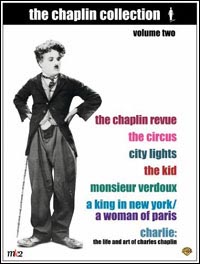
During the second decade of the twentieth century, immigrants like Laemmle and Zukor came to dominate the movie business. Unlike Edison and the other American-born, Protestant businessmen who had controlled the early film industry, these immigrant entrepreneurs had a better sense of what the public wanted to see. Virtually all of these new producers emigrated to the United States from central Europe and were Jewish. Less conservative than the American-born producers, they were more willing to experiment with such innovations as the star system and feature-length productions. Since many had come to the film industry from the garment and fur trades where fashions change rapidly and the successful businessman is one who stays constantly in touch with the latest styles, they tried to give the public what it wanted.
As Samuel Goldwyn, one of the leading moguls, noted46, "If the audience don't like a picture, they have a good reason. The public is never wrong. I don't go for all this thing that when I have a failure, it is because the audience doesn't have the taste or education, or isn't sensitive enough. The public pays money. It wants to be entertained. That's all I know." With this philosophy the outsiders wrestled47 control over the industry away from the American-born producers.
During the 1920s and 1930s, a small group of film companies consolidated48 their control. Known as 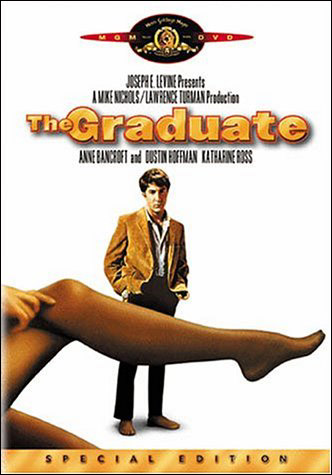 the "Big Five" - Paramount49, Warner Brothers, RKO, 20th Century-Fox, and Lowe's (MGM) and the "Little Three" - Universal, Columbia, and United Artists, they formed fully10 integrated companies. With the exception of United Artists, which was solely50 a distribution company, the "majors" owned their own production facilities, ran their own worldwide distribution networks, and controlled theater chains that were committed to showing the company's products. And at the head of each major studio was a powerful mogul such giants as Adolph Zukor, Wiliam Fox, Louis B. Mayer, Samuel Goldwyn, Carl Laemmle, Harry51 Cohn, Joseph Schenck, and the Warner Brothers who determined52 what the public was going to see. It was their vision--patriotic, sentimental53, secular54, and generally politically conservative which millions of Americans shared weekly at local movie theaters.
the "Big Five" - Paramount49, Warner Brothers, RKO, 20th Century-Fox, and Lowe's (MGM) and the "Little Three" - Universal, Columbia, and United Artists, they formed fully10 integrated companies. With the exception of United Artists, which was solely50 a distribution company, the "majors" owned their own production facilities, ran their own worldwide distribution networks, and controlled theater chains that were committed to showing the company's products. And at the head of each major studio was a powerful mogul such giants as Adolph Zukor, Wiliam Fox, Louis B. Mayer, Samuel Goldwyn, Carl Laemmle, Harry51 Cohn, Joseph Schenck, and the Warner Brothers who determined52 what the public was going to see. It was their vision--patriotic, sentimental53, secular54, and generally politically conservative which millions of Americans shared weekly at local movie theaters.
During the 1920s, movie attendance soared. By the middle of the decade, 50 million people a week went to the movies - the equivalent of half the nation's population. In Chicago, in 1929, theaters had enough seats for half the city's population to attend a movie each day.
In 1926, Warner Brothers released the film Don Juan--the first film with a synchronized55 film score--along with a program of talking shorts. The popularity of The Jazz Singer, which was released in 1927, erased56 any doubts about the popular appeal of sound, and within a year, 300 theaters were wired for sound.
The arrival of sound produced a sharp upsurge in movie attendance, which jumped from 50 million a week in the mid-20s to 110 million in 1929. But it also produced a number of fundamental transformations57 in the movies themselves. As Robert Ray has shown, sound made the movies more American. The introduction of sound also encouraged new film genres59--like the musical, the gangster60 film, and comedies that relied on wit rather than slapstick.
In addition, the talkies dramatically changed the movie- going experience, especially for the working class. Where many working class audiences had provided silent films with a spoken dialogue, movie-goers were now expected to remain quiet. As one film historian has observed: "The talking audience for silent pictures became a silent audience for talking pictures. "Moreover, the stage shows and other forms of live entertainment that had appeared in silent movie houses increasingly disappeared, replaced by newsreels and animated61 shorts.
The film industry changed radically62 after World War II, and this change altered the style and content of the films made in Hollywood. After experiencing boom years from 1939 to 1946, the film industry began a long period of decline. Within just seven years, attendance and box receipts fell to half their 1946 levels.
During the 1940s, a new film genre58--known as film noir-- arose, which gave tangible63 expression to the psychic64 confusion of a nation that had won the largest war in history but faced even greater uncertainties65 in peacetime. Though film noir received its named from French film critics and was heavily influenced by German expressionist film making techniques, it stands out as one of the most original and innovative66 American movie genres.
After the war, Hollywood's audience not only shrank, it also fragmented into distinct subgroups. An audience interested in serious social problem films expanded. During the postwar period Hollywood produced a growing number addressing such problems as ethnic6 and racial prejudice, anti-Semitism, sufferings of maltreated mental patients, and the problems of alcohol and drug addiction67. The growing popularity of science fiction thrillers68 also reflected the emergence69 of the youth market and the spread of a certain paranoid style during the Cold War years.
As the 1960s began, few wo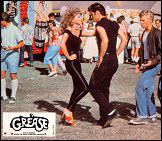 uld have guessed that the decade would be one of the most socially conscious and stylistically innovative in Hollywood's history. Among the most popular films at the decade's start were Doris Day romantic comedies like That Touch of Mink70 (1962) and epic71 blockbusters like The Longest Day (1962), Lawrence of Arabia (1962), and Cleopatra (1963). Yet, as the decade progressed, Hollywood radically shifted focus and began to produce an increasing number of anti-establishment films, laced with social commentary, directed at the growing youth market. Two films released in 1967--Bonnie and Clyde and The Graduate--awoke Hollywood to the size and influence of the youth audience.
uld have guessed that the decade would be one of the most socially conscious and stylistically innovative in Hollywood's history. Among the most popular films at the decade's start were Doris Day romantic comedies like That Touch of Mink70 (1962) and epic71 blockbusters like The Longest Day (1962), Lawrence of Arabia (1962), and Cleopatra (1963). Yet, as the decade progressed, Hollywood radically shifted focus and began to produce an increasing number of anti-establishment films, laced with social commentary, directed at the growing youth market. Two films released in 1967--Bonnie and Clyde and The Graduate--awoke Hollywood to the size and influence of the youth audience.
A number of most influential72 films of the late '60s and early '70s sought to revise older film genres--like the war film, the crime film, and the western--and rewrite Hollywood's earlier versions of American history from a more critical perspective. Francis Ford45 Coppola's The Godfather (1972) revised and enhanced the gangster genre by transforming it into a critical commentary on an immigrant family's pursuit of the American dream.
During the mid- and late-70s, the mood of American films shifted sharply. Unlike the highly politicized films of the early part of the decade, the most popular films of the late 1970s and early 1980s were escapist blockbusters like Star Wars (1977), Superman (1978), and Raiders of the Lost Ark (1981)-- featuring spectacular special effects, action, and simplistic conflicts between good and evil--inspirational tales of the indomitable human spirit, like Rocky (1976)--or nostalgia73 for a more innocent past--like Animal House (1978) and Grease (1978).
In a 1992 bestseller Hollywood vs. America, Michael Medved, co-host of public television's Sneak74 Previews, described Hollywood as a "poison factory," befouling America's moral atmosphere and assaulting the country's "mo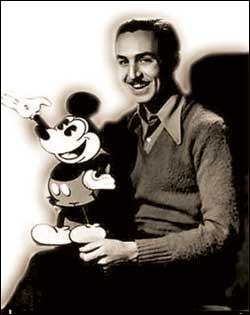 st cherished values." Today's films, he argued, use their enormous capacity to influence opinion by glamorizing violence, maligning75 marriage, mocking authority, promoting sexual promiscuity76, ridiculing77 religion, and bombarding viewers with an endless stream of profanity, gratuitous78 sex, and loutish79 forms of behavior. Where once the movies offered sentiment, elegance80, and romance, now, Medved contends, ideologically-motivated producers and directors promote their own divisive agenda: anti-religion, anti-family, anti-military.
st cherished values." Today's films, he argued, use their enormous capacity to influence opinion by glamorizing violence, maligning75 marriage, mocking authority, promoting sexual promiscuity76, ridiculing77 religion, and bombarding viewers with an endless stream of profanity, gratuitous78 sex, and loutish79 forms of behavior. Where once the movies offered sentiment, elegance80, and romance, now, Medved contends, ideologically-motivated producers and directors promote their own divisive agenda: anti-religion, anti-family, anti-military.
Nevertheless, as the movie industry enters its second century, many Americans worry about Hollywood's future. Medved is not alone in complaining that "they don't make movies like they used to." A basic problem facing today's Hollywood is the rapidly rising cost of making and marketing81 a movie: an average of $40 million today. The immense cost of producing movies has led the studios to seek guaranteed hits: blockbuster loaded with high-tech82 special effects, sequels, and remakes of earlier movies, foreign films, and even old TV shows.
For a century, the movie industry has been the nation's most important purveyor83 of culture and entertainment to the masses, playing a critical role in the shift from Victorian to distinctively84 modern, consumer values; from a world of words to a visual culture; from a society rooted in islands of localities and ethnic groups to a commercialized mass culture. The movies taught Americans how to kiss, make love, conceive of gender roles, and understand their place in the world. Whether film will continue to serve as the nation's preeminent85 instrument of cultural expression--reflecting and also shaping values and cultural ideals--remains to be seen.
1893年,T.A.爱迪生发明电影视镜并创建“囚车”摄影场,被视为美国电影史的开端。1896年,维太放映机的推出开始了美国电影的群众性放映。
19世纪末20世纪初,美国的城市工业发展和中下层居民迅速增多,电影成为适应城市平民需要的一种大众娱乐。它起先在歌舞游乐场内,随后进人小剧场,在剧目演出之后放映。
1905年在匹兹堡出现的镍币影院(入场券为5美分镍币)很快遍及美国所有城镇,到1910年每周的电影观众多达3600万人次。当时影片都是单本一部的,产量每月400部,主要制片基地在纽约,如爱迪生公司、比沃格拉夫公司和维太格拉夫公司。1903年E.S.鲍特的《一个美国消防员的生活》和《火车大劫案》,使电影从一种新奇的玩艺儿发展为一门艺术。影片中使用了剪辑技巧,鲍特成为用交叉剪辑手法造成戏剧效果的第一位导演。
电影收益高,竞争激烈。1897年,爱迪生即为争夺专利进行诉讼,到1908年,成立了由爱迪生控制的电影专利公司,公司拥有16项专利权。到1910年,电影专利公司垄断了美国电影的制作、发行和放映。独立制片商为摆脱专利公司的垄断,相继到远离纽约和芝加哥的洛杉机郊外小镇好莱坞去拍片,那里自然条件得天独厚,又临近墨西哥边境,一旦专利公司提出诉讼便可逃离。D.W.格里菲斯1907年加入比沃格拉夫公司,次年导演了第一部影片《陶丽历险记》。至1912年已为该公司摄制了近400部影片,把拍片重心逐渐移向好莱坞,并发现和培养了许多后来的名演员。
第一次世界大战前夕,镍币影院逐渐被一些条件较好的电影院所代替;电影专利公司的垄断权势逐渐消失,终于在1915年正式解体。此时以格里菲斯为代表的一批新的电影艺术家已经出现。制片中心也从东海岸移到好莱坞。第一次世界大战不同程度地破坏和损害了欧洲各国的电影业,却促成了美国电影的勃兴。美国电影源源不断地涌人欧洲市场。到第一次世界大战结束时,已经建立起在欧洲的霸权地位。 “好莱坞”此时己成为“美国电影”的同义语。
第一次世界大战后,不少欧洲导演陆续来到好莱坞,他们的才能不同程度地受到了制片公司的抑制和扼杀。
20年代中期,豪华的电影院已基本上取代了镍币影院。20年代末期,好莱坞电影为战胜商业无线电广播这样的竞争对手,在音响方面进行了一次革命,产生了有声电影。
1926年,华纳兄弟影业公司拍摄了用唱片来配唱的由Alan Crosland导演,John Barrymore主演的歌剧片《唐璜》
1927年10月6日又首映了由Alan Crosland导演、Al Jolson主演的有歌唱、对白、声响的《爵士歌手》,这是世界上第一部有声故事片。
1928年7月6日华纳公司又推出了“百分之百的有声片”《纽约之光》。自此,有声电影全面推开。至1930年,除卓别林继续拍摄了几部无声片外,全部故事片均为有声片。
好莱坞的制片公司是1912年开始相继建立的。随着1928年雷电华影业股份有限公司的组建,形成了美国电影业的8家大公司。它们包括5家较大的影片公司,即派拉蒙(组建于1914)、20世纪福斯(始建于1915,合并于1935)、米高梅(合并于1924)、华纳兄弟(1923)和雷电华(1928);3家较小的公司,即环球(1912)、哥伦比亚(1924)和联美(1919)。我们将在后面为大家介绍这些世界知名的电影公司。
美国电影中的特殊现象——类型影片,在30年代获得了充分的发展。最初的类型片是无声电影时代的喜剧片、闹剧片和西部片,到30年代初期,歌舞片、盗匪片、侦探片、恐怖片等类型相继出现并得到繁荣发展。类型电影是美国经济、社会和文化需要的直接产物。
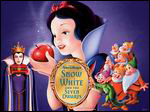 从20年代末开始,W.迪斯尼创造了米老鼠、唐者鸭等一系列家喻户晓的动画形像;从1938年的《白雪公主和七个小矮人》开始,创造了《木偶奇遇记》(1940)、《幻想曲》(1940)、《小鹿班比》 (1942)等脍炙人口的动画长片,使美国动画片的影响遍及世界。
从20年代末开始,W.迪斯尼创造了米老鼠、唐者鸭等一系列家喻户晓的动画形像;从1938年的《白雪公主和七个小矮人》开始,创造了《木偶奇遇记》(1940)、《幻想曲》(1940)、《小鹿班比》 (1942)等脍炙人口的动画长片,使美国动画片的影响遍及世界。
好莱坞在30年代发展为美国一个文化中心,众多的作家、音乐家及其他人士相继来到这一电影都城。他们之间相互影响,拍摄出一批社会意识较强的影片。
从二战后开始直至50年代初期,是好莱坞“黄金时代”的最后一段繁荣时期。
美国电影自40年代末至50年代中,也经历了一系列的打击和挑战。首先,1948年5月美国最高法院根据反托拉斯法对拖延 多年的“派拉蒙案”作出裁决,判定大公司垄断为非法,要求制片公 司放弃发行和经营电影院的业务。这就切断了大公司的主要财源,迫使公司大幅度减少影片生产。其次,美国电视发展迅速,到1953年,电影观众人数与1946年相比减少了一半。为争夺观众,早在20年前即已发明出来的宽银幕电影此时开始成为与电视竞争的手段。
在“好莱坞之后”的年代里,一些经典题材和类型电影发生了变化。 这一时期是美国青年思想最动荡的年代,相应出现了很多表现青年疑虑、反抗的所谓“反英雄”影片,其中有我们耳熟能详的由Mike Nichols导演,Dustin Hoffman主演的电影《毕业生》,The Graduate.
美国电影的“复兴”是从Stephen Spielberg的《大白鲨》(1975)和George Lucas的《星球大战》(1977)开始的。这两位导演都是南加利福尼亚大学电影学院的毕业生,他们运用当代工艺技巧制作的传统类型片(灾难片、科幻片)引起强烈的反应,并导致美国电影的制作和票房收入直线上升。受到美国青少年观众欢迎的科幻片发展为集灾难片、冒险片而成的场面壮观的影片的一个新片种,这些影片包括《第三类接触》(1977)、《异物》(1979)、《外星人》(1982)、《失去方舟的入侵者》(1981)、《金刚》(1976)、《超人》(1979)、《侏罗纪公园》(1993)以及这些影片的续集。
Part 2 The Hollyland of the American Movie Industry---Hollywood 美国电影圣地---好莱坞 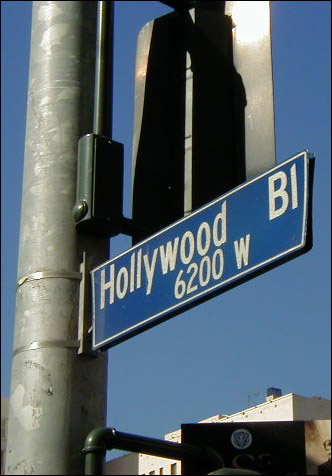
In cinema's earliest days, the film industry was based in the nation's theatrical86 center, New York, and most films were made in New York or New Jersey87, although a few were shot in Chicago, Florida, and elsewhere. Beginning in 1908, however, a growing number of filmmakers located in southern California, drawn88 by cheap land and labor89, the ready accessibility of varied90 scenery, and a climate ideal for year-round outdoor filming.
Contrary to popular mythology91, moviemakers did not move to Hollywood to escape the film trust; the first studio to move to Hollywood, Selig, was actually a trust member.
By the early 1920s, Hollywood had become the world's film capital. It produced virtually all films show in the United States and received 80 percent of the revenue from films shown abroad. During the '20s, Hollywood bolstered92 its position as world leader by recruiting many of Europe's most talented actors and actresses, like Greta Garbo and Hedy Lamarr, directors like Ernst Lubitsch and Josef von Sternberg, as well as camera operators, lighting93 technicians, and set designers,By the end of the decade, Hollywood claimed to be the nation's fifth largest industry, attracting 83 cents out of every dollar Americans spent on amusement.
Hollywood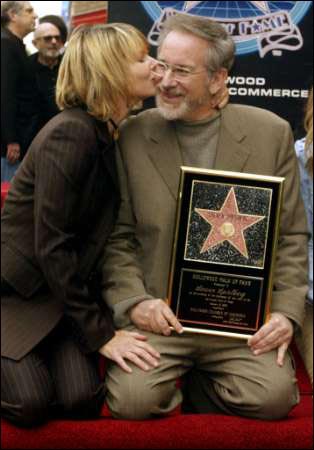 had also come to symbolize94 "the new morality" of the 1920s--a mixture of extravagance, glamour95, hedonism, and fun. Where else but Hollywood would an actress like Gloria Swanson bath in a solid gold bathtub or a screen cowboy like Tom Mix have his named raised atop his house in six foot high letters.
had also come to symbolize94 "the new morality" of the 1920s--a mixture of extravagance, glamour95, hedonism, and fun. Where else but Hollywood would an actress like Gloria Swanson bath in a solid gold bathtub or a screen cowboy like Tom Mix have his named raised atop his house in six foot high letters.
加利福尼亚州洛杉矶市一区,位于市区西北郊。20世纪初,电影制片商在此发现理想的拍片自然环境,陆续集中到此,使好莱坞逐渐成为世界闻名的影城。1908年好莱坞拍出最早的故事片之一《基度山恩仇记》。1912年起相继建立制片公司,到1928年已形成派拉蒙等“八大影片公司”。三、四十年代是好莱坞的鼎盛时期,摄制了大量成为电影史上代表作的优秀影片,并使美国电影的影响遍及世界。同时好莱坞亦发展为美国一个文化中心,众多的作家、音乐家、影星及其他人土汇聚于此。第二次世界大战后,制片厂陆续迁出,许多拍片设施闲置或转手电视片制作商。60年代初,好莱坞成为美国电视节目的主要生产基地。
区内名胜有“好莱坞碗”(天然圆形剧场)、“朝圣者”圆形剧场、希腊剧院、中国剧院、加利福尼亚艺术俱乐部等。许多新、老影星居住在附近的贝弗利山上。
 收听单词发音
收听单词发音 




